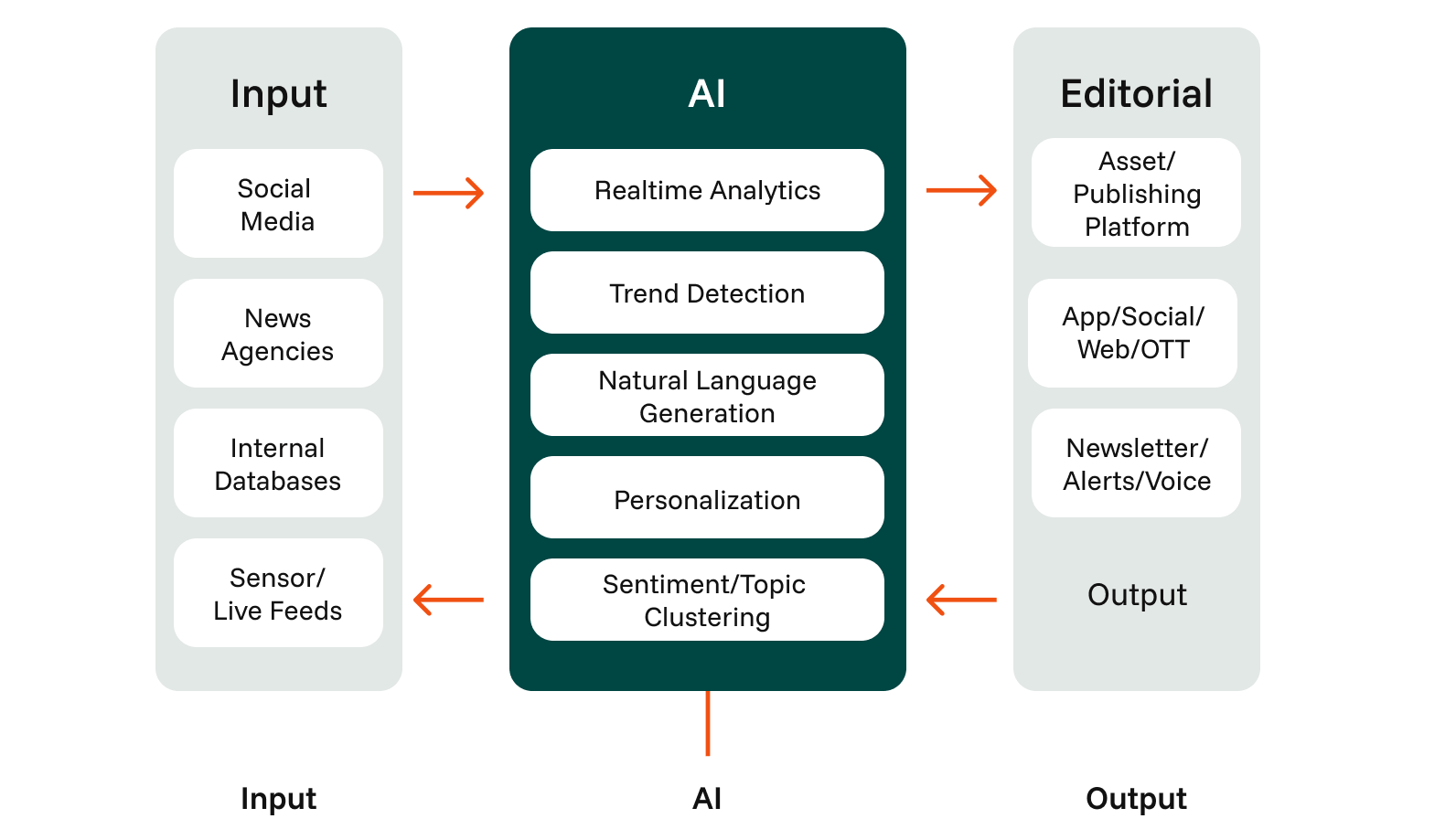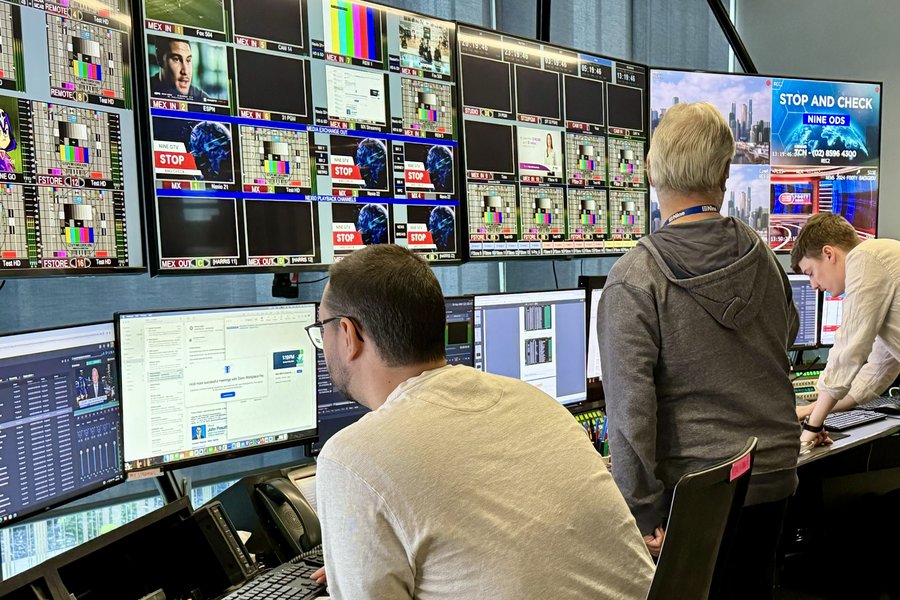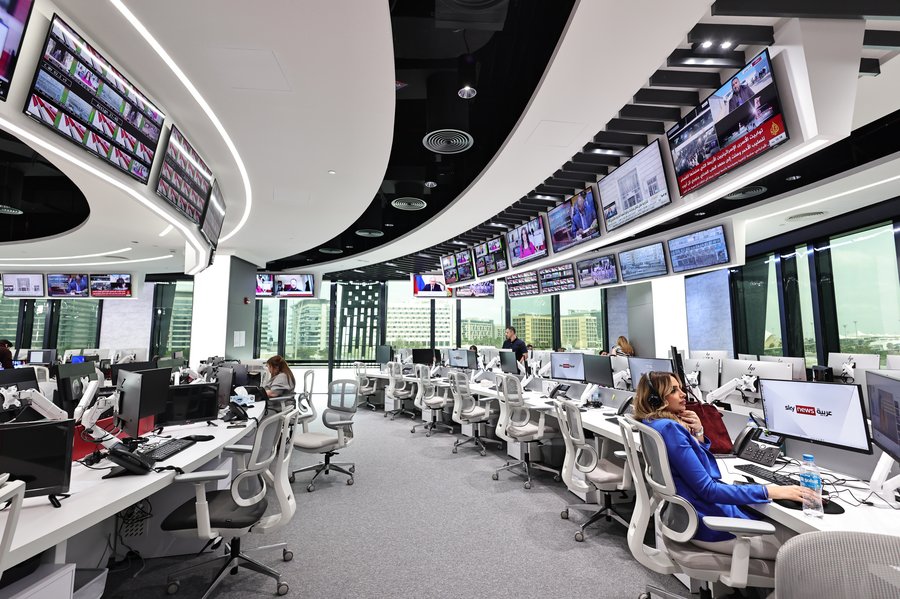AI in the newsroom: Broadcasters rely on real-time decision support

How artificial intelligence is revolutionizing the newsroom – potentials, challenges, future models
The transformation starts in the newsroom
Today more than ever, journalism must deliver what matters while staying flexible and innovative to thrive in an ever-changing environment. The competition for attention has intensified, and expectations for speed, accuracy, and relevance in journalistic content continue to rise.
At the same time, technological progress has accelerated massively. Digital platforms are reshaping user behavior and distribution logics. Artificial intelligence (AI) is increasingly becoming a focus of strategic thinking for media organizations. It is seen as a key technology for digital transformation, especially in journalism. In newsrooms, AI’s potential becomes particularly evident in real-time decision support: helping to identify relevant topics faster, produce content more efficiently, and increase reach based on data.
Boosting efficiency through automation and intelligent workflows
Many editorial tasks follow standardized procedures such as morning news updates, compiling wire reports, or initial content production. AI solutions are increasingly taking over these routine tasks, easing the load on journalistic teams. Typical use cases:
-
Real-time monitoring: AI scans social media, news wires, and other data sources to identify relevant topics faster than any human could.
-
Automated topic suggestions: Based on defined target groups and strategic guidelines, the system suggests storylines and headlines.
-
Text automation: News on sports results, weather, or financial data can be automatically transformed into journalistic formats.
Automation makes production processes more efficient and reduces time-to-publish without compromising, and often even enhancing, quality. Journalists gain time for investigative work, creative formats, and editorial depth.
AI newsroom architecture map

Quality and consistency: AI as a guardian of editorial standards
Despite some concerns, AI can actually help ensure journalistic quality when used correctly. Automated quality checks review grammar, spelling, factual accuracy, and source validation. AI also helps maintain a consistent style and tone across different platforms. For large, decentralized editorial teams, this is a key success factor in brand management. Stylistic checks, gender sensitivity, and adherence to ethical standards can all be AI-monitored and integrated into editorial workflows.
Personalization and reach: News that connects with audiences
Personalization is a crucial lever in the fight for user retention and reach. Based on user data, AI can deliver individualized content tailored to preferences, usage times, or preferred channels. Whether push notifications, social media content, or personalized newsletters: AI systems enhance the relevance of journalistic offerings, improving engagement, dwell time, and conversion rates. They also enable granular performance tracking and ongoing optimization based on real-time data.
Human-machine collaboration as the model of the future
Fears that AI will fully replace journalists are unfounded and unproductive. Instead, hybrid models are emerging, where humans and machines collaborate: AI provides facts, data, and text drafts; humans curate, interpret, verify, and add depth and perspective.
This collaboration is becoming the new normal. The better editors understand and train AI systems, the greater the added value. The strengths of both sides complement each other to create better, faster, and more relevant journalism. This also redefines the journalist’s role into data-savvy decision-makers with a strong grasp of technology.
Flexibility and scalability: Technological platforms for dynamic needs
Productive use of AI requires flexible, scalable system architectures. Modern AI platforms are cloud-based, modular, and integrate seamlessly with existing IT infrastructures. They offer open interfaces to editorial systems, CMS, archives, and publishing platforms.
Broadcasters can gradually expand their AI infrastructure, starting with wire processing or social monitoring, and later moving into production or personalization. This “plug-and-play” principle ensures investment security and enables a step-by-step transformation without disruption.
Challenges: Change management, ethics, and transparency
AI implementation in newsrooms is not just a technical challenge, it’s a cultural one. Changes in processes and roles require active change management, training programs, and open communication strategies. Ethical questions also arise:
-
How are data selected and used?
-
How is bias detected and mitigated?
-
What responsibility do editorial teams bear for algorithmic decisions?
Transparency and control are essential. AI systems must act in an explainable and understandable manner. Editorial teams should establish governance structures that align ethical standards with technology use.
Conclusion: The new newsroom is data-driven, agile, and hybrid
AI is not a future topic, it’s already a reality in many modern newsrooms. Its impact is especially felt in real-time decision support, content personalization, and editorial process relief.
Those who invest today in flexible, ethically sound AI systems not only boost efficiency but also enhance editorial quality and innovation. The newsroom of the future blends technology with purpose–creating a scalable model for sustainable journalistic success.
Bringing together technology, strategy, and culture
We support media organizations and broadcasters worldwide with a holistic approach to digital transformation. Our services include:
-
Technology consulting and needs assessments
-
Design and integration of scalable AI solutions
-
Process automation and workflow optimization
-
Training, change management, and cultural anchoring
This creates the foundation for data-driven, agile newsrooms and helps broadcasters leverage the synergies between humans and machines to their full potential.
Curious how AI can unlock new value in your newsroom? Let’s explore your potential from initial needs assessment to scalable implementation. Get in touch with us.


























